Providers of casters and automated carts aren’t quite reinventing the wheel, but they are evolving to better support the move tow...
Providers of casters and automated carts aren’t quite reinventing the wheel, but they are evolving to better support the move toward automation. That means evolution in terms of caster designs that are maintenance free and easy to roll to support high uptime.
![]()
The move toward automationdoesn’t mean a decline in demand for materials handling carts and the casters and wheels found on them. Far from it. In multiple ways, the automation trend is pulling the market for carts and casters right along with it, increasing demand for carts that will be part of automated solutions.
Cart and caster vendors often work with vendors of automatic guided vehicles (AGVs) to provide carts for tow tractor or “tugger” AGV deployments, and casters and wheels also make their way into some shuttle and automated storage solutions that make use of tracked carrier units that move on rails in the storage infrastructure. Some vendors of larger format autonomous mobile robots (AMRs) offer tow tractor AMRs that can autonomously deliver pallet-sized loads.
Automation is the source of much of the momentum in the market for casters and carts, with vendors stressing the need for high-quality casters to ensure maximum uptime for automated systems. Some cart vendors are also taking a modular approach that allows a manual cart to be turned into an automatic guided cart.
The growth of e-commerce and high volumes for many warehouses, combined with difficulty in finding enough skilled labor for positions like lift truck and tugger operators, are seen as fueling the automation trend, and in turn, influencing caster designs.
The ongoing challenge that industrial companies face in finding and keeping enough qualified frontline labor is a key driver of growth for the caster industry, says Mark Lippert,vice president of marketing with Hamilton Caster.
“The level of automation has certainly accelerated, due to issues stemming from not having enough skilled labor to carry out the volume of tasks needed by operations,” says Lippert. “So, more companies are putting in additional automation to compensate, and that drives demand for the caster market.”
Automation & casters
While durability and strength have always been important, when casters are part of automation solutions, it makes sense to specify and use higher quality casters that will avoid system downtime and the need for frequent maintenance, even if they are more costly than a lower-end caster.
To help meet such needs, says Lippert, Hamilton has devised a line of “endurance casters” that fit onto the widely used 2-1/2 by 3-5/8-inch mounting plate size for industrial casters, but rather than being stamped, are forged with a high-strength swivel construction.
Lippert says this design and manufacturing technique provides a load capacity rating of 1,000 pounds per caster, versus the 400-pound rating found in many lower end casters that fit that mounting plate size. “With automation, many of these applications run on a 24/7 basis, so you want a caster that you can put in place once, and essentially forget about it, because they will just keep working,” he says.
Apart from durability, users are also interested in the ergonomics of casters, meaning casters that make carts easy to push, pull or otherwise maneuver. Generally, says Lippert, this means a “resilient trend” caster made of polyurethane. Wheels made with a high-quality polyurethane, he says, offer easy rolling characteristics, much like a metal wheel, but run quieter and protect facility floors better than metal wheels.
“If you go with standard, run of the mill casters, they tend to fall apart over time and users find themselves replacing casters all the time,” says Lippert. “A lot of these casters, especially within automated solutions, may not be easy to get to, so you want a high-quality caster that helps to make your automated systems worry free.”
Mobilizing the IT workstation
IT carts with on-board, hot-swappable power can bring efficiency gains to core fulfillment processes.
While materials handling carts help DC operations move materials and pick orders, another type of cart can help support the information technology (IT) system access and bar code printing processes.
Companies can deploy mobile IT workstation carts with lithium battery power on board to cut out wasted steps and save time for front-line workers, says Steve Shaheen, CEO and co-founder of Definitive Technology Group (DTG), a provider of mobile IT workstation carts.
While some warehouses processes can be carried out effectively with rugged, mobile handheld devices, other workflows, such a printing bar codes, returns processing or accessing management information, can be made more efficient with a “workstation on wheels,” as DTG positions its products.
For example, says Shaheen, instead of having workers walk to a fixed thermal bar code printer to collect a batch of shipping labels or other types of labels such as “license plates” used for material flow tracking, a mobile IT workstation can eliminate that walking.
“Let’s say you have a process that calls for the printing of a batch of thermal bar code labels, but workers end up having to walk 100 yards to apply those labels to the correct items, pallets or containers,” Shaheen says. “Those are wasted steps that could be eliminated if you mobilize that printer on a workstation, and take it to where the labeling tasks need to take place.”
DTG’s IT carts include a lithium battery system that is hot swappable to support multi-shift needs. The carts can power PCs, thermal printers, handheld scanners, RFID readers, or power up mobile devices that need a recharge, with height adjustable mounting options for monitors or other gear.
Shaheen says DTG’s lithium battery technology is core to the effectiveness of its carts, but much of the value comes from DTG’s staff who have Six Sigma expertise, and consult with an operation on which workflows are the best candidates for process efficiencies.
For example, says Shaheen, a DC that ships large, bulky items like gas grills, could have a worker roll a mobile workstation near that inventory to print shipping labels, rather having a worker to walk to a fixed printer location, walk back to the oversized inventory, find the correct SKU or SKUs, and apply the labels.
“If you’re at a fixed printer station, and you have to walk across the warehouse to where those large items are to apply some labels, there is more chance for distractions, and mistakes,” says Shaheen. “It’s easy to place a label on the wrong item. Mobilizing the workstation and bringing the technology to the point of task reduces the risk for such errors, in addition to reducing travel.”
While reducing errors is part of the benefit, the main area of payback comes from reducing unneeded steps and work travel, because Shaheen point out: “Steps take time, and time is money.”
![]()
Mobile warehouse computer carts with on-board lithium power can be seen as tool for eliminating worker steps and costs from order fulfillment processes in DCs.
Ed Brown, founder and CEO of Topper Industrial, a provider of materials handling carts, concurs that the trend toward automation is a major driver. While some of Topper’s carts are intended for manual operation, the company also specializes in carts pulled by either human-operated tuggers or AGV/AMR tuggers. This summer, he adds, Topper was working to provide carts for about a half dozen active AGV projects, and working on quotes for carts for several others.
“There is just a huge challenge with finding enough labor right now, so many companies are looking to automate more,” says Brown. “It’s actually a combination of trying to gain efficiencies via automation, along with making the operation safer. For me, safety is the No. 1 concern, but the volumes are getting so big for many of these 24/7 operations, and labor availability is such an issue for them, that they are looking for efficiency gains by using more automation.”
Cart efficiencies
When used as part of a tow train system, either manual or automated, the cart design itself can add efficiency, even if much of the efficiency of the overall system comes from hauling multiple loads at once.
![]()
Transfer carts typically need to be able to handle heavy loads and may feature roller tops or other mechanisms to facilitate transfer of materials to conveyor or other equipment.
“Rather than going back and forth four times with a lift truck to move materials from one location to another, you can use a tugger to pull a train of four carts, so there is some pretty simple math involved in the efficiency of tow-train systems,” says Brown.
Tuggers and tow trains are often used in manufacturing for line-side replenishment of work-in-process (WIP) materials, moving multiple carts from a warehouse area to an assembly line or production work cell. In such applications, a “mother daughter” cart design minimizes handling time because any “daughter” cart in the train can detach from its mother cart without decoupling other mother carts on the train, Brown explains.
Mother daughter carts have variations, but basically, the daughter carts are designed to fit inside and securely lock into the larger mother carts, so any daughter cart can be quickly accessed, and empty daughter carts can be quickly secured back into the train and returned for refill. What’s more, says Brown, the daughter carts can be customized to act as ergonomic, mobile work containers for holding materials line side.
“With the right cart at the assembly line, you can eliminate the need for a lift table or a turntable, or whatever you may need for ergonomics,” Brown says. “You don’t want people bending any more than they have to, and our carts address that because they can be made to any height you want, or be adjustable.”
Brown concurs that with carts used with mobile automation, it’s worth it to invest in high-quality casters, typically sealed casters with polyurethane wheels. “I feel the best investment on any cart is to get it with the very best casters you can put on it,” says Brown.
As for the move to AGVs or AMRs instead of human-operated tuggers, Brown says increased levels of automation are likely coming, given the trends with labor availability, a growth economy and busy, multi-shift operations. A sign of that trend, Brown adds, is that some of Topper’s customers are asking for carts that can initially be deployed as carts to be pulled by a human-operated tugger, but have compatible electronics and controls so they can be easily adapted at a later date to serve as carts for a fully automated tow train system.
Cart provider FlexQubefollows a modular and what it calls “flexible” concept in which carts and racks are bolted together to make them adjustable and reconfigurable. On top of this base configurable concept for its mechanical carts, FlexQube devised what it calls “smart modules” that can be added to quickly create automated cart solutions, according to Anders Fogelberg, FlexQube’s CEO.
“Beginning in 2016, our CTO and one of the founders of FlexQube, Per Augustsson, started investigating the idea of adding smart building blocks to our existing concept,” says Fogelberg. “Up until that time, we found success with our mechanical building blocks, which could be designed to create heavy-duty materials handling carts of all different sizes. We knew that automation was coming and understood that this would always be the way forward, so we began a project investigating how to add intelligence to our concept. Fortunately, we were able to find a simple way to accomplish this, which led to our eQart. Our carts have added sensors, cameras, a battery, motors, and an intelligent brain.”
Fogelberg says that eQart workflows or routes can be deployed in hours, rather than the weeks it might take for some AGV systems. “In practice, our customers can ship us back any cart, and we can add on the “smart” modules and ship back an automated eQart within weeks,” says Fogelberg.
![]()
Some cart providers take a modular approach to adding the intelligence and sensing needed to turn a manual cart into a smart, automated cart.
Vendors of tow tractors or tow-tractor AGVs may have alliances with cart vendors to offer tow-train solutions. For example, The Raymond Corporation recently partnered with K.Hartwall on solutions that pair Raymond tow tractors with K.Hartwall’s tow-train solutions, including systems that make use of K.Hartwall’s LiftLiner tow train system. The carts for this system can be seen as a variant on the mother daughter cart principle, in that compact mother carts hold the materials carts.
The mother carts have tilting technology that allows one worker to load and unload different sized carts from either side without the need to sequence carts. The design makes cart handling more efficient at the point of delivery, and can be paired with a tow tractor AGV for maximum labor savings.
“Operations in industries from e-commerce and manufacturing to automotive are turning to intralogistics solutions that are easy to implement and operator friendly to help overcome today’s warehouse labor challenges and space constraints,” says Dave Norton, Raymond’s vice president of customer solutions and support. “For example, tow-trains with tilting technology make the loading and unloading process easy for a one-person operation, and when paired with an automatic guided vehicle—like Raymond Courier automated tow tractors—tow-trains provide for a flexible solution that maximizes efficiency.”
The ergonomics factor
Cart and caster vendors also say that improving ergonomics is gaining in importance, given growing volumes and the difficulty in finding and retaining warehouse labor. That involves everything from design features that make casters and carts easier to push, to solutions such as motorized casters that can mechanize the movement of heavy loads.
While polyurethane wheels and casters with sealed bearings are generally a good choice, not all polyurethane wheels are created equal, according to Elmer Lee, director of engineering for Caster Concepts.
Generally, highly ergonomic wheels that make carts easier to start and keep rolling have what are known as good “dynamic” properties to the polyurethane that provides better “rebound.” The quality of the swivel bearing in the caster also plays a big role in making a cart easier to roll, adds Lee.
“Some polyurethanes tend to be sluggish and dead, and what that means is that every time you roll that wheel, it’s eating up more of your energy,” says Lee.
Lee adds that besides polyurethane with good dynamic properties, it’s also desirable to have casters with sealed, maintenance-free, “deep-groove” ball bearings for the swivels. They cost more than conventional “single race” ball swivels that need periodic lubrication, but over time, the higher end swivel bearing adds to productivity and means less exertion for workers.
“The ergonomics of casters has a lot to do with productivity, and has to do with lessening the chance of strains and injuries,” says Lee. “There’s also is a worker comfort and satisfaction aspect to ergonomics. In general, highly ergonomic casters make for a more controllable [cart] system.”
There are upper limits to how heavy a cart and load one worker can manipulate, even with the highest end, most ergonomic casters. Here is where a powered caster such as Caster Concepts Drive Caster can be beneficial, says Lee. It allows one worker to move a very heavy load, because an electric motor integrated into the caster design does the work, while the worker just steers the load into place.
The Drive Caster system came out of user needs in verticals such as automotive, says Lee, because while tuggers can efficiently move bigger loads to production areas, it remains challenging to manually move heavier loads that last several yards into the ideal position, or re-adjust its position, without needing multiple workers to pitch in, or waiting for a piece of materials handling equipment.
“In e-commerce, there’s the concept of last-mile, but in this particular case with carts, the challenge is that last 20 feet of distance, and doing that as efficiently and safely as possible,” says Lee.
About the Author
Roberto MichelRoberto Michel, senior editor for Modern, has covered manufacturing and supply chain management trends since 1996, mainly as a former staff editor and former contributor at Manufacturing Business Technology. He has been a contributor to Modern since 2004. He has worked on numerous show dailies, including at ProMat, the North American Material Handling Logistics show, and National Manufacturing Week.



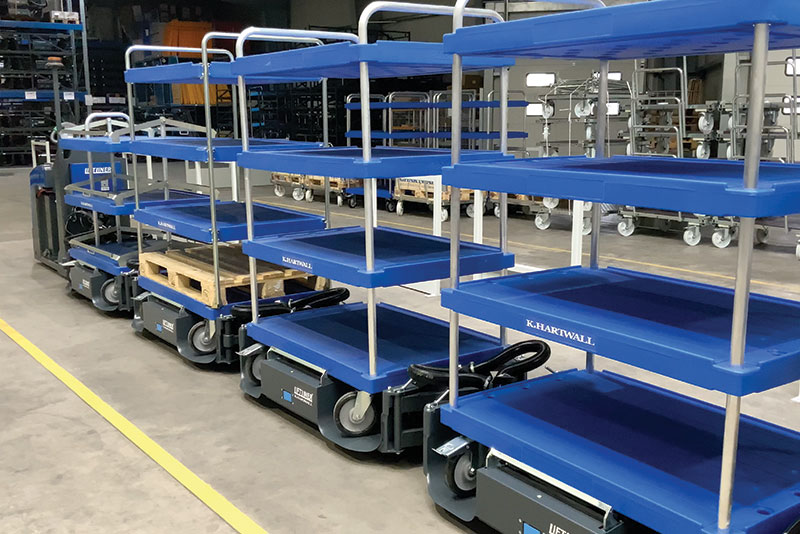
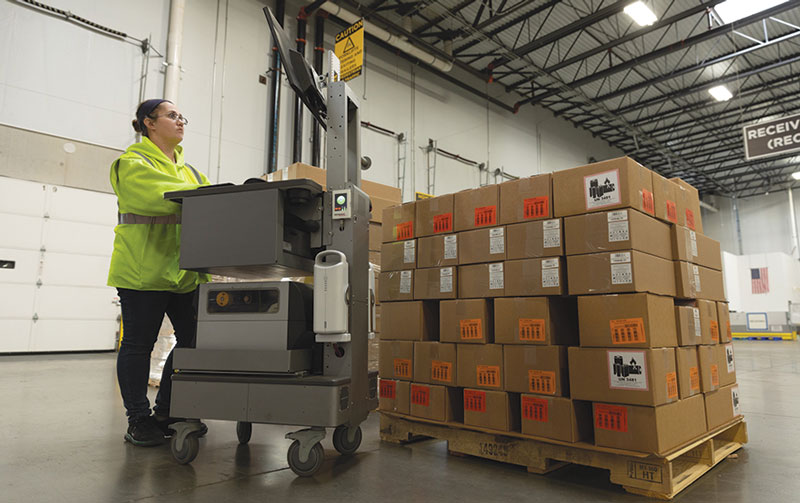
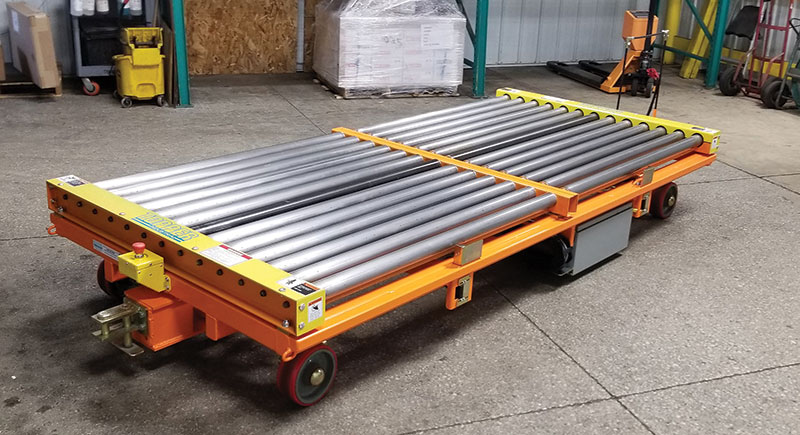
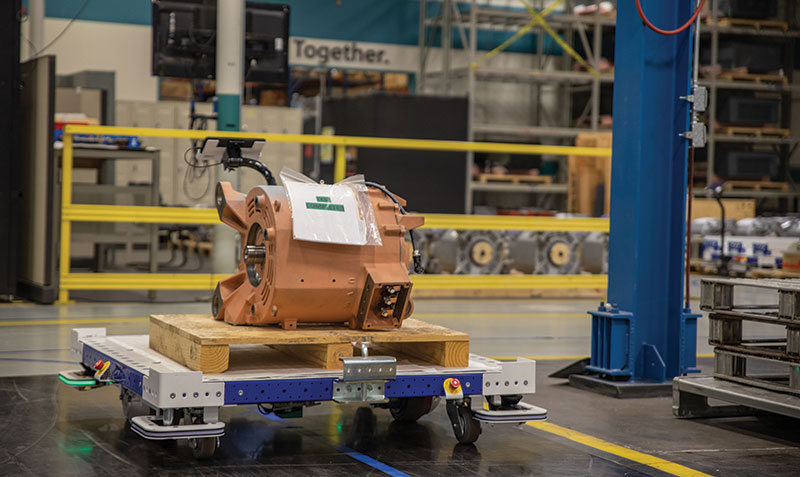
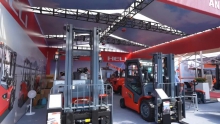
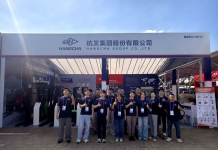


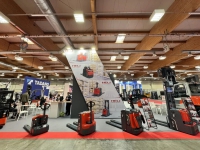
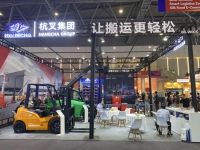

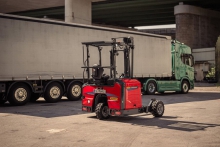
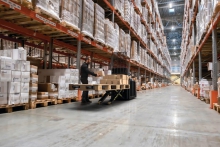
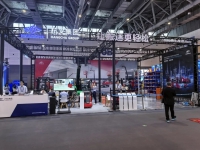


 粤公网安备 44010602003952号
粤公网安备 44010602003952号